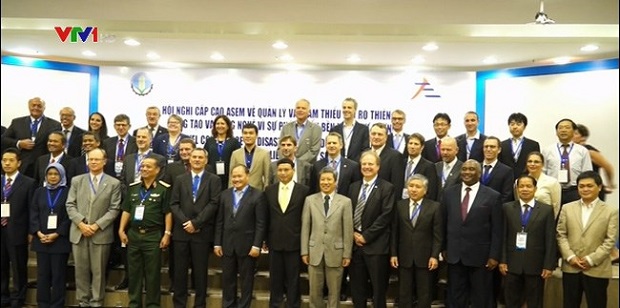ASEM Summit discusses disaster risk management
Representatives from the Asia-Europe Meeting (ASEM)’s members, the United Nations (UN) and its agencies gathered for an ASEM Summit on disaster risk management in Da Nang on 14 September.
 |
| Participants at the Summit (Source: VNA) |
The 2-day event has 'Innovation & Technology in Resilience based Sustainable Debelopment' as its theme, It is offering a chance for ASEM countries to discuss and share their best practical lessons on technology applications in managing natural disasters. In addition, discussions are focussing on enhancing ASEM cooperation in implement the Sendai Framework for Disaster Risk Reduction in the 2015- 2020 period, with a vision to 2030, for sustainable development goals.
Participants will also discuss measures to bolster cooperation in sci-tech development within ASEM and the building of policy framework to promote disaster risk management and reduction.
They will also talk about the role of renovation and technology in raising public awareness of disaster risk mitigation.
In his opening speech, Mr Petrovic Peter, the Permanent Representative of the Slovak Republic to the European Union (EU) hailed ASEM members’ efforts in managing and reducing disaster risks.
Negative impacts caused by climate change, unusual and unpredicted development of natural disasters have disordered the lives of people, especially those in rural areas, and adversely affected the reslisation of the UN Millennium Development Goals, he remarked.
He took the opportunity to appeal for joint efforts in natural disaster response and climate change adaptation from countries in the region, and the world as a whole.
Deputy Minister of Agriculture and Rural Development Hoang Van Thang said the impacts of climate change and economic development, excessive use of natural resources, especially water, and incomprehensive management have increased disaster risks, threatening Viet Nam’s sustainable development, especially in the Mekong River Delta.
He underlined the importance of sci-tech and renovation and creativity in improving disaster risk management capacity.
Thanks to remote sensing technology, satellite image and mobile communication network, the early forecast of storms and the timely provision of storm information for offshore ships and fishermen have minimised risks at sea, he noted.
He stressed the need for ASEM members to share experience and information, promote their cooperation in research, to set up a network of sci-tech organisations, and enhance their technical assistance.. These will help the member nations better managage their disaster risks.
According to the Global Assessment Report on Disaster Risk Reduction (GAR), over 1.5 billion people around the world were annually impacted by natural disasters. Impacts caused by climate change, rapid population growth and urbanisation, and environmental depression directly affected the people worldwide.
The 3rd UN World Conference on Disaster Risk Reduction in Sendai, Japan in March last year called for urgent initiatives to reduce disaster risks and build a sustainable development community adaptable to climate change.
(Source: Vietnamplus/ Da Nang Today)